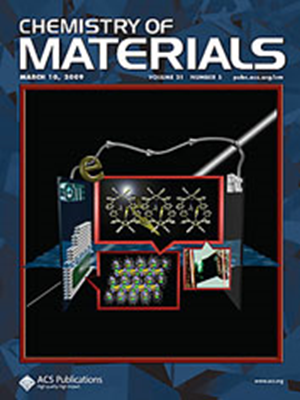Chiral Shape Engineering Combined with Bimetallic Nanostructures for High-Performance Plasmonic Sulfide Sensors
IF 7
2区 材料科学
Q2 CHEMISTRY, PHYSICAL
引用次数: 0
Abstract
Combining chiral shape engineering with the plasmonic sensor features significantly enhances sensor performance and effectively avoids potential background interference. These advantages suggest that chiral nanoparticles could provide valuable insights into addressing defects or shortcomings in traditional plasmonic sensors. Herein, to address the common drawback of performance degradation due to line width broadening in plasmonic sulfide sensors during sulfidation, we designed a distinctive intrinsically chiral bimetallic core–shell plasmonic nanoparticle. The chiral gold core provided strong chiroptical activities, enriching the spectral features, including bipolar peaks and zero-crossing points, while the silver shell was used for sulfide sensing. Remarkably, this chiral plasmonic sulfide sensor demonstrated exceptional sensitivity and clarity. Specifically, the zero-crossing point in the circular dichroism spectrum serves as an easily recognizable tracking feature, leveraging the trend of line width broadening to enhance sensor responsiveness. Particularly, at a sulfide concentration of only 5 μM, the zero-crossing point shift reached up to 170 nm, with a maximum shift limit of 208 nm, surpassing all previously reported plasmonic sulfide sensors. Finally, the well-defined structure of this chiral-core sensing-shell design offers an alternative fabrication approach for expanding the chiral plasmonic sensing platform, allowing for flexible replacement of the shell material to meet specific sensing requirements.

手性形状工程与双金属纳米结构相结合用于高性能等离子体硫化物传感器
将手性形状工程与等离子体传感器特性相结合,可以显著提高传感器的性能,有效地避免潜在的背景干扰。这些优点表明,手性纳米颗粒可以为解决传统等离子体传感器的缺陷或缺点提供有价值的见解。为了解决等离子体硫化物传感器在硫化过程中由于线宽变宽而导致性能下降的常见缺点,我们设计了一种独特的固有手性双金属核壳等离子体纳米粒子。手性金核提供了强烈的手性活性,丰富了光谱特征,包括双极性峰和零交叉点,而银壳则用于硫化物传感。值得注意的是,这种手性等离子体硫化物传感器表现出卓越的灵敏度和清晰度。具体而言,圆二色光谱中的零点交叉点作为易于识别的跟踪特征,利用线宽变宽的趋势来增强传感器的响应性。特别是,在硫化物浓度仅为5 μM时,过零点位移达到170 nm,最大位移限制为208 nm,超过了之前报道的所有等离子体硫化物传感器。最后,这种明确定义的手性核传感壳设计结构为扩展手性等离子体传感平台提供了一种替代制造方法,允许灵活更换外壳材料以满足特定的传感要求。
本文章由计算机程序翻译,如有差异,请以英文原文为准。
求助全文
约1分钟内获得全文
求助全文
来源期刊

Chemistry of Materials
工程技术-材料科学:综合
CiteScore
14.10
自引率
5.80%
发文量
929
审稿时长
1.5 months
期刊介绍:
The journal Chemistry of Materials focuses on publishing original research at the intersection of materials science and chemistry. The studies published in the journal involve chemistry as a prominent component and explore topics such as the design, synthesis, characterization, processing, understanding, and application of functional or potentially functional materials. The journal covers various areas of interest, including inorganic and organic solid-state chemistry, nanomaterials, biomaterials, thin films and polymers, and composite/hybrid materials. The journal particularly seeks papers that highlight the creation or development of innovative materials with novel optical, electrical, magnetic, catalytic, or mechanical properties. It is essential that manuscripts on these topics have a primary focus on the chemistry of materials and represent a significant advancement compared to prior research. Before external reviews are sought, submitted manuscripts undergo a review process by a minimum of two editors to ensure their appropriateness for the journal and the presence of sufficient evidence of a significant advance that will be of broad interest to the materials chemistry community.
 求助内容:
求助内容: 应助结果提醒方式:
应助结果提醒方式:


